Kapedes
According to historical sources, one of the largest copper processing plants was located at Kapedes
The community of Kapedes is located about 25 kilometers south of Nicosia, built at the foot of the Machairas Mountains. It is a semi-mountainous village with almost no plain, the extent of which is quite large. The landscape of the village is divided from the stream of Agios Onoufrios, the tributary of Pedieos, as well as from the tributaries of Gialia that cross the area.
In the last census that took place in 2001, the community of Kapedes numbered 530 inhabitants.
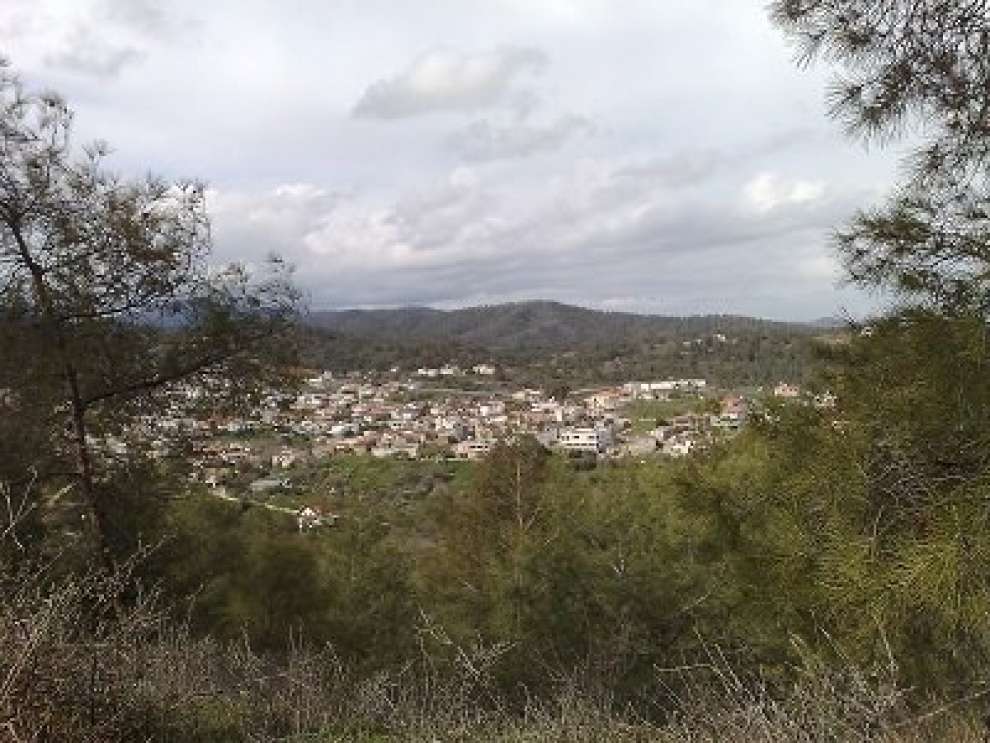 Photo: Apostolos Kadis
Photo: Apostolos Kadis
The history of the village of Kapedes:
As the mines that exist around the area of Ancient Tamassus, the village of Kapedes has existed since the Copper Age. According to historical sources, one of the largest copper processing plants was located at Kapedes.
In 1464, Kapedes village was given as a gift to Benedetto Vernazza by the King of Cyprus, Iakovos II. Later, Archimandrite Kyprianos reports that the Kapedes village belonged to a family of Venetians, apparently descendants of Benedetto Vernazza, who later abandoned it.
Kapedes existed during the Ottoman domination and possibly the Frankish and Venetian domination.
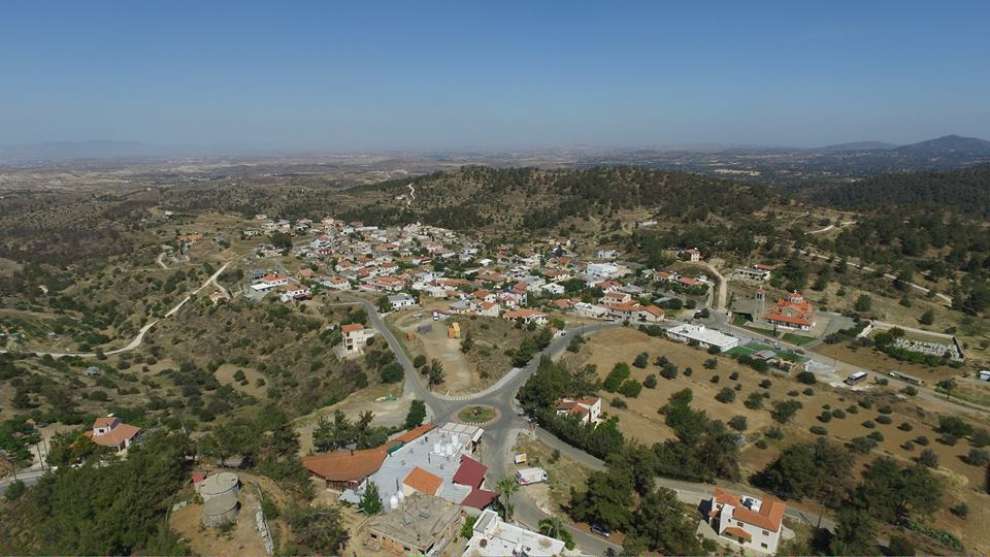 Photo: Dora's Foto Moments
Photo: Dora's Foto Moments
The name of the village of Kapedes:
About how the village got its name, there are several versions. Three of them are predominant. According to the first version, the village of Kapedes was a part of the Monastery of Archangel, and was used to remove ten monks who did not follow the rules of the Monastery. The remaining monks used to say "Πάνω στους δέκα παίδες" meaning up to the ten children. Using the words "δέκα παίδες" (Deka pedes) the village was called Kapedes.
According to a second version, in the barns of the monesteries of the area, lived the shepherds with their families. These shepherds caused damage to the area. They were described as "κακούς παίδες" meaning bad children. From "κακούς παίδες" (Kakous Pedes) this village was called Kapedes.
Finally, a third version states that the name of the village came from the "KAPAKIA" of mines, that is, a layer of metal, abounding in the area.
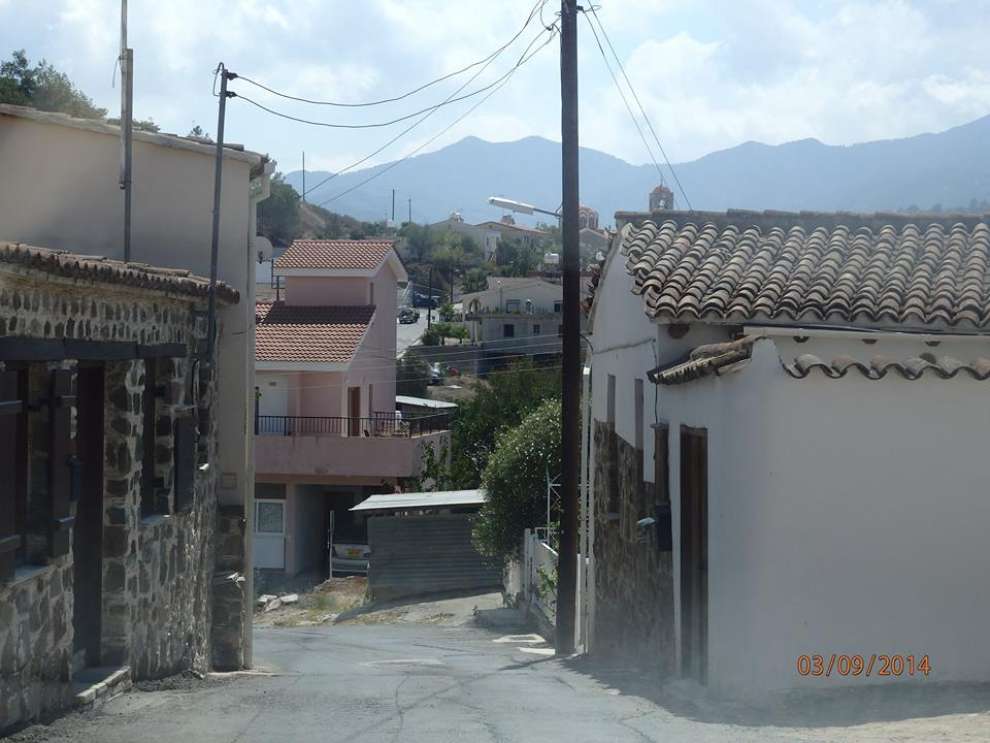 Photo: George Papageorgiou
Photo: George Papageorgiou
The Churches of the Kapedes:
Taking a walk in the village of Kapedes you will see three beautiful churches. The church of the Virgin Mary of the Gold-painted building of 1731 which is located in the central square of the village. The church of Saint George of the Tropeophorou, built in the 19th century, a single-aisled temple with polygonal outer and semi-circular inner arch and the new church of Saint George of the Tropeophorou, whose doors were made in July 2005. The latter is built at the entrance village.
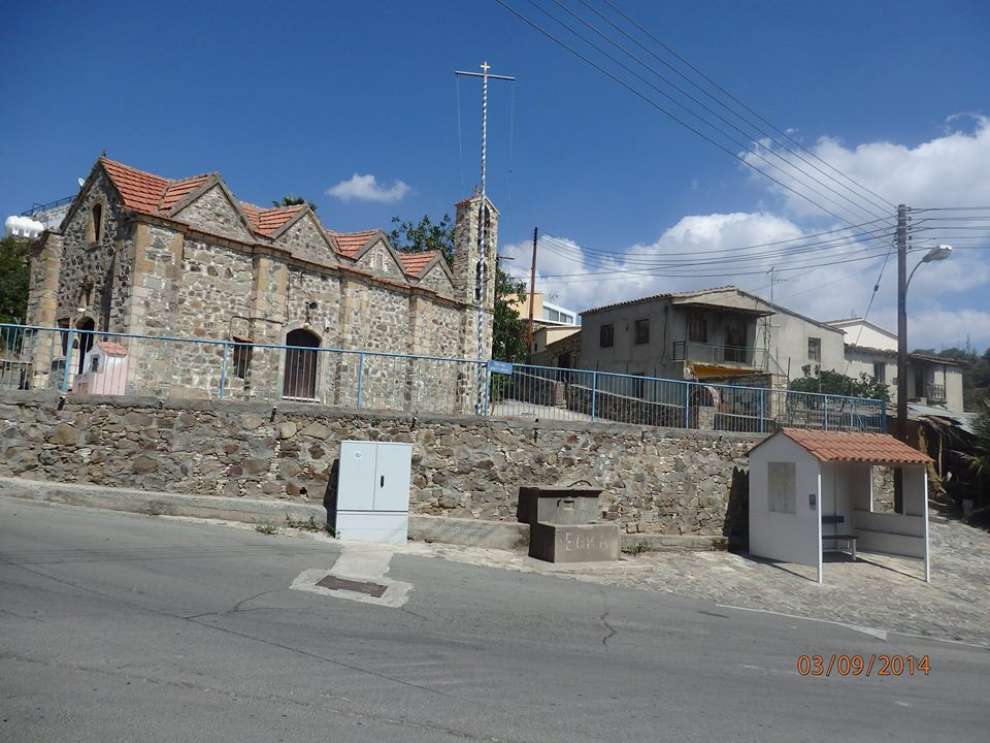 Photo: George Papageorgiou
Photo: George Papageorgiou
Products of the village:
During the past years the inhabitants of the village of Kapedes were mainly involved in the cultivation of Vineyards. Today (2018) they are mainly engaged in technical professions. There are fewer farmers. The products grown in the Kapedes are olives, almonds and very few cereals. The larger area of the village is uncultivated.
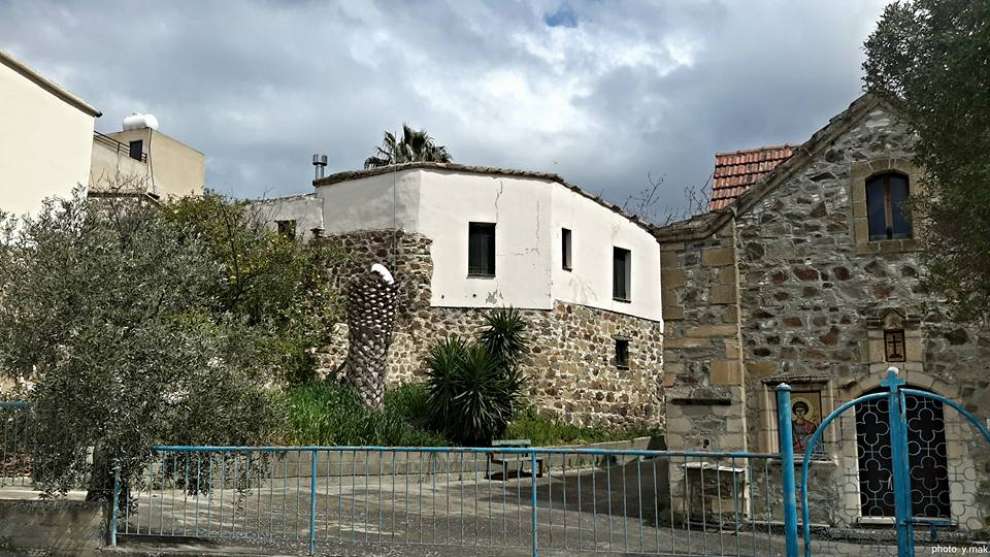 Photo: Yiannis Makriyianni
Photo: Yiannis Makriyianni
To the west of the village of Kapedes, for many years people have been mining the earth to find copper and pyrite. They used small trains that descended into the mine, they filled them with dirt and climbed them back to the surface, transferring their precious cargo to the washing area. By digging the earth they created a huge amphitheater basin. Over the years, it grew, until the day that they stopped digging for copper. The mine was abandoned by its owner, who was a Hellenic Mining Company (AME).
The company however, left the landscape with no attemps of restoration. They did not even plant any trees before they left. Nature, however, has undertaken to restore what man's greed has destroyed. It filled the whole in the ground with water and gave it all the colours of the earth to "fit in" with the landscape. It transformed it into a beautiful lake. This small but impressive red lake of the Kokkinonero mine is located between the villages of Kapedes, Kampia and Analiontas. It is a pyrite mine that operated in the 1950s by Hellenic Mining Company (Hellenic Mining Company).
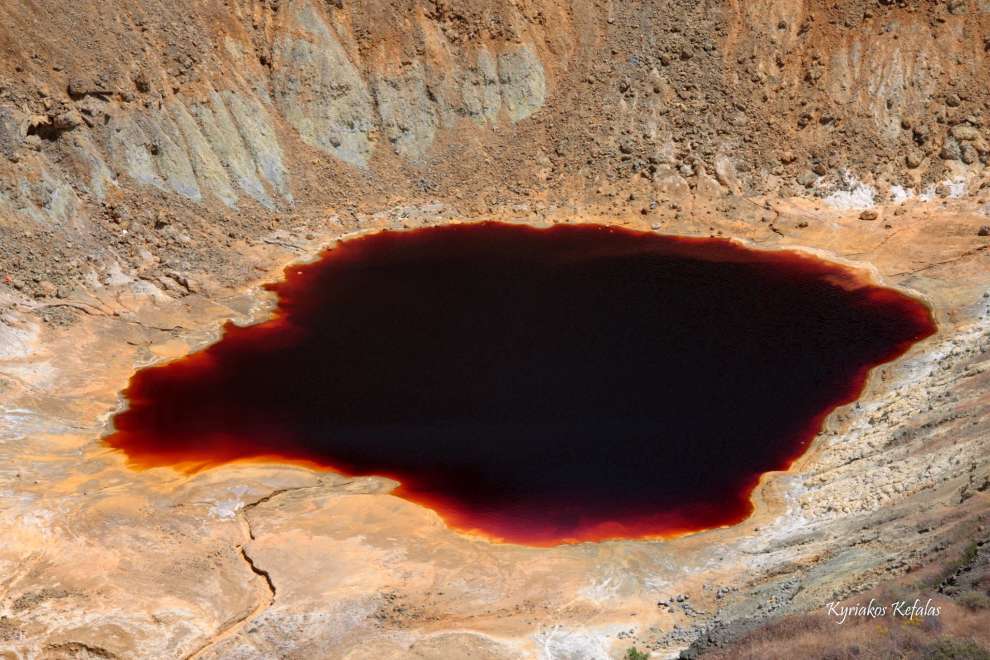 Photo: Kyriakos Kefalas
Photo: Kyriakos Kefalas
For the map of the area, click HERE

 English
English
 Ελληνικά
Ελληνικά Русский
Русский
















